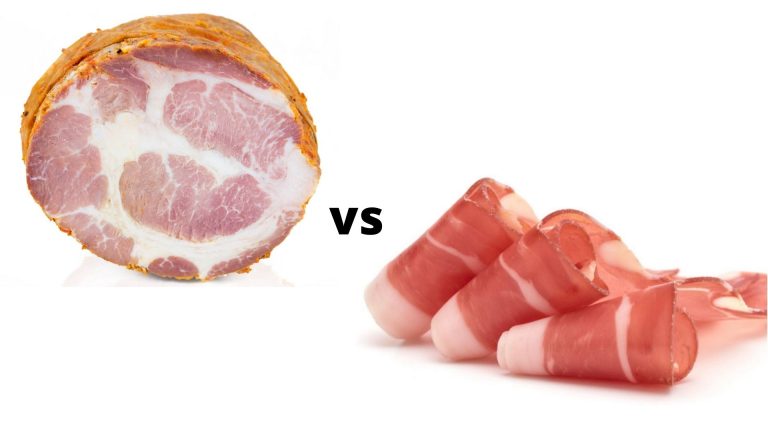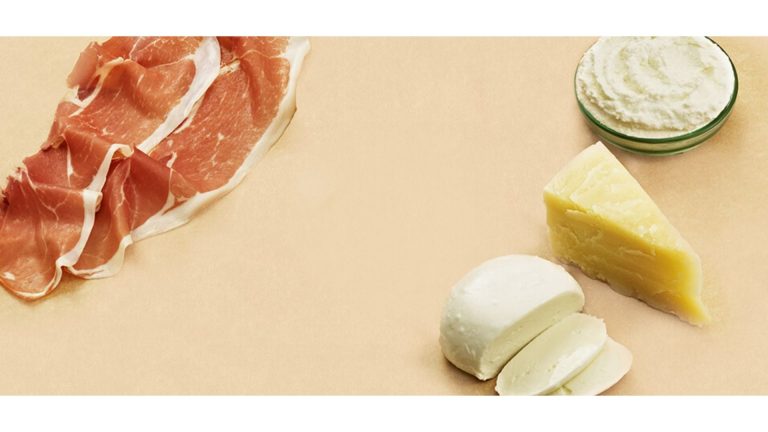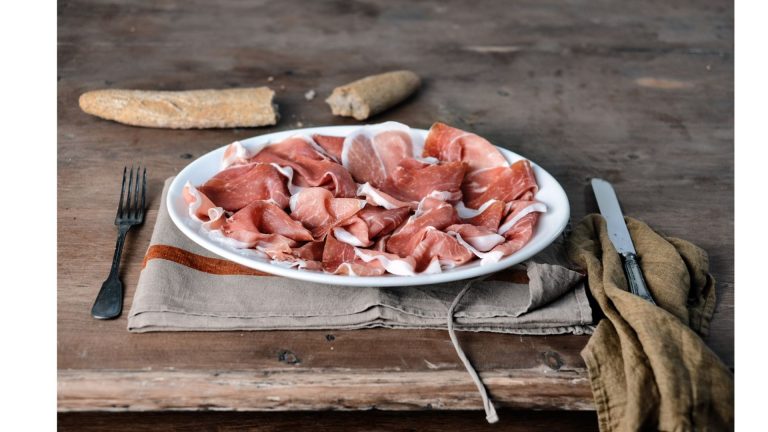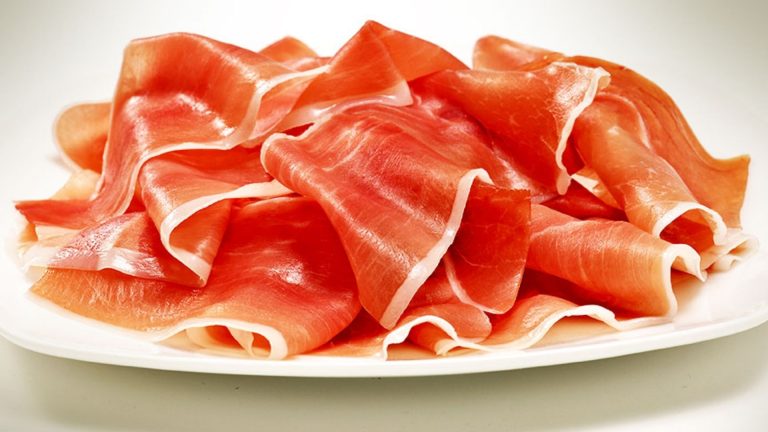Parma Ham vs Prosciutto: What Are the Main Differences?
Parma ham is the most delicious cured ham in Italy. While prosciutto is one of the most popular cured hams in Italy, and around the world.
Parma Ham is cured pork that has been salted, dried, and then air-dried. Parma Ham is a specialty of Parma and Reggio Emilia, Italy.
It is often compared to prosciutto because of its similar appearance and flavor. Prosciutto is dry-cured ham.
Prosciutto is cured pork that has been salted, dried, and then air-dried.
But while prosciutto is made with pork, Parma ham is made with the air-dried leg of a pig. Prosciutto is usually a thicker and firmer ham than Parma.
The best way to tell if you’re buying Parma ham is by looking for the ‘X’ on the label, which is the symbol for Parma ham.
In Italy, it’s typically eaten in combination with cheese. You’ll see prosciutto on the labels of other cured meats, but not necessarily in the US.
Prosciutto tends to be more expensive than Parma ham. It tends to be a little thinner and less salty than Parma ham, but is still delicious!
Prosciutto is the Italian word for ham and Parma is a region in Italy. Parma ham is only made in the Parma region and should be prepared according to the guidelines.
I will show you how Parma ham and regular prosciutto are prepared and how to identify real Parma ham. I will also answer whether you can substitute one with the other.
Read on to know more.
Table of Contents
Is Parma Ham the Same as Prosciutto?
According to the FDA, there are several differences between Parma Ham and Prosciutto. Parma Ham is made with loin and leg meat that is cured, salted, and air-dried.
Prosciutto is made with a shoulder and leg that is smoked and air-dried. It also has more salt.
Prosciutto should be used sparingly because too much salt in food can cause dehydration.
Parma ham can be eaten in many ways: alone, over pizza, over salads, or on top of pasta dishes.
Dry-cured Italian meat called prosciutto is a type of meat. “prosciutto cotto” is a word that means “cooked ham.”
“Prosciutto ham” is a word that means “raw ham.” “prosciutto crudo” is a word that means “raw ham.
Pork legs are generously rubbed with salt and herbs to make prosciutto. After that, the meat is left to rest in a cool place for a few weeks to remove the excess water.
The process of washing the meat is repeated several times. The meat can be left to cure for up to 36 months the second time around.
Meat has a unique sweet and salty taste during this time.
Prosciutto is a specialty in the Parma region of Italy. Parma ham and Prosciutto have a lot in common, as you might have guessed.
Both of them are made from dry-cured pork legs. The preparation processes are the same, but there is more than one difference.
Why Is It Called Parma Ham?
The Parmesan cheese region of Italy is the birthplace of Parma ham or prosciutto di parma.
According to a website dedicated to the history of cured meat, Parma ham is the result of an old tradition that started with the Romans.
After conquering Rome, the invading army was forced to settle in the city.
To earn their keep, they had to take up a profession; many of them turned to agriculture, which was an easy task for a military group accustomed to living in tents and fighting battles.
So, they began raising pigs to make the salt pork that they needed to survive.
To preserve the meat, they smoked it and added herbs. As more people took up the practice, the region became known for the quality of its cured meats.
Prosciutto can be found in any region, whereas di Parma is exclusive to Parma. It can’t be produced anywhere else because it is a protected designation of origin.
The hams of Prosciutto di Parma are some of the finest in the world. It should have a narrow line of creamy fat running down one side if it is thinly sliced.
The Parma ham should have a crown mark with the word “Parma” written on it. The standards for the preparation are overseen by the Consorzio del Prosciutto di Parma.
What Is the Difference Between Parma Ham and Prosciutto?
Parma ham is typically made from pork belly that’s been cured, brined, smoked, and air-dried for up to four months.
Prosciutto is made of meat that comes from the legs, shoulders, and belly of the pig. There are many varieties of prosciutto, including white prosciutto, which uses only the legs and thighs.
Most prosciutto is a lump of dark meat, meaning the muscles of the leg. Parma ham is a lump of white meat, and it’s made from the leg and shoulder muscles of the pig.
Parma ham is only made from Landrace and Duroc pigs, but you can use any pig for regular prosciutto.
After the meat is rubbed with salt, it is left to rest for a week. After the pork is rubbed with the second layer of salt, it is left to age for another 15 to 18 days.
The meat is placed in a cool and dry room for 90 days. The meat is left to cure for three months after it is washed off the excess salt.
The external layer of the prosciutto is covered with a mix of salt and lard to prevent it from drying out. A cellar-like room is where the meat is left for a year.
After the curing process is complete, each leg of prosciutto is checked for quality standards to be called prosciutto di Parma.
If the meat passes the test, it is given a mark called the Ducal Crown mark. The taste of regular prosciutto may differ more noticeably as a result of the less strict guidelines.
Can I Substitute Prosciutto for Parma Ham?
It’s hard to find real Parma ham in US stores.
When Parma ham is cooked or mixed with other ingredients, you won’t notice a big difference when the meat is cooked with other ingredients.
So you can substitute parma ham for prosciutto.
Both types of meat have a sweet flavor and a melting texture when thinly sliced.
Regular prosciutto may be prepared with herbs, which may give it a slightly different smell and taste.
Conclusion
I hope this blog helped you to find the difference between parma ham and prosciutto. I suggest you try real parma ham once in your life if you haven’t had a chance to try it.
It comes with a unique flavor and texture that can’t be replicated with prosciutto that has been made outside Italy.

Foodie and a passionate cook, I am here to share all of what I know about cooking, kitchen, and food prepping.
Follow me for delicious and healthy recipes.







